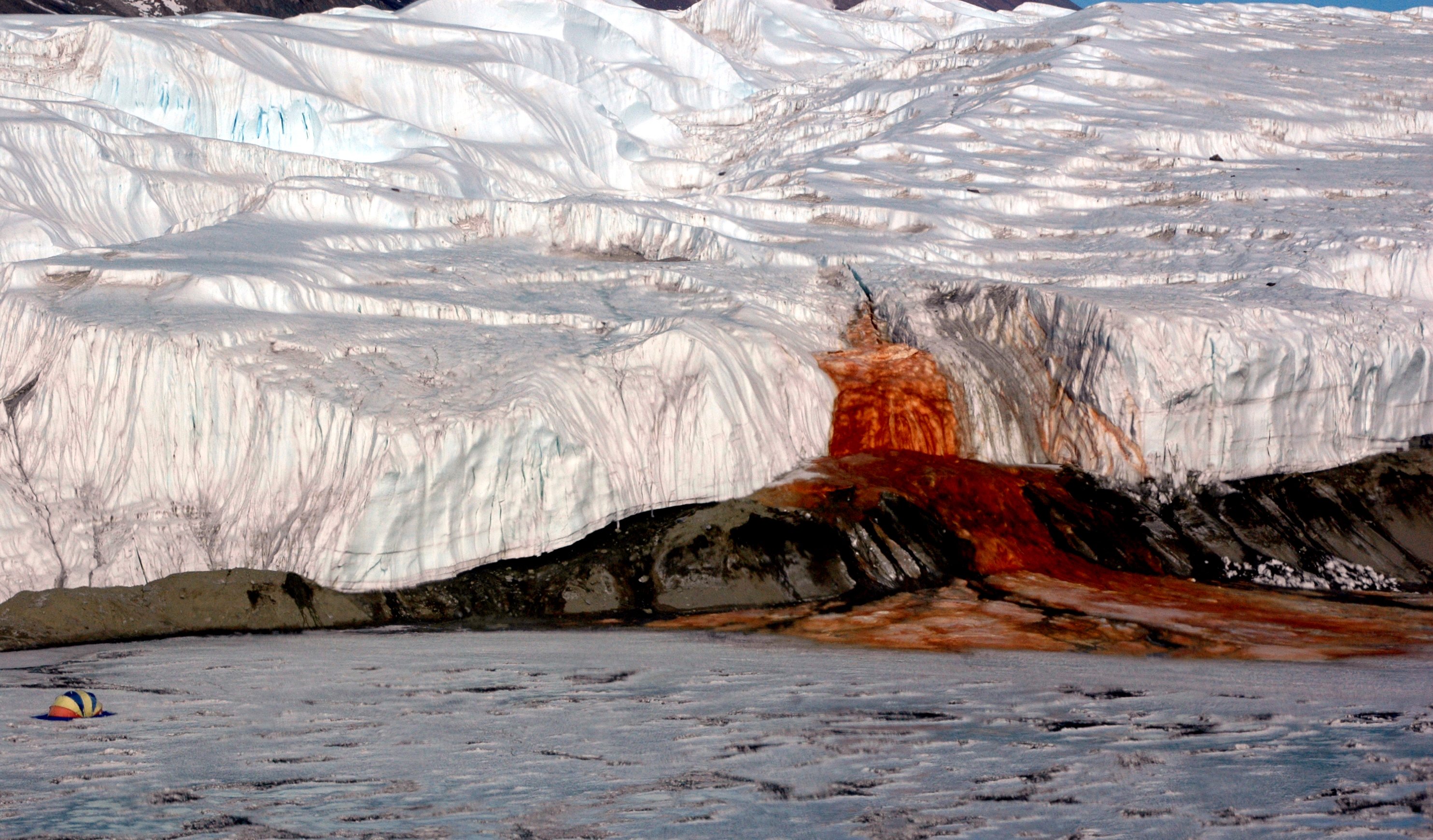Antarctica is a place of breathtaking beauty and extreme conditions. It is a realm of ice, mystery, and scientific wonder, harboring secrets that continue to baffle and intrigue researchers. One such enigma is the phenomenon known as "Blood Falls," a striking feature in the Taylor Valley that appears to ooze blood-red liquid from beneath a glacier. This eerie and mesmerizing spectacle has captured the imagination of scientists and curious minds alike, prompting numerous investigations and theories to unravel its origins. Blood Falls stands as a testament to the unyielding mysteries that our planet still holds, despite the advances of modern science and technology.
Discovery and Appearance
The first documented encounter with Blood Falls dates back to the early 20th century, when Australian geologist Thomas Griffith Taylor embarked on an expedition to explore the valley that now bears his name. As Taylor and his team ventured into this remote, glacial landscape, they came upon a peculiar sight: a crimson-stained waterfall pouring from the icy mouth of a glacier. While the name "Blood Falls" might invoke thoughts of something sinister or supernatural, the reality is grounded in scientific marvel and geological wonder.
The most striking aspect of Blood Falls is its blood-red discharge, which stems from iron oxide, commonly known as rust. But what makes this phenomenon especially astonishing is the origin of the iron-rich liquid that seeps from beneath the glacier. The leading theory suggests that the source is a subglacial lake that has been isolated from the rest of the world for an estimated 2 million years. This isolation has given rise to a unique and enigmatic ecosystem, making Blood Falls a focal point of scientific fascination.
The Subglacial Lake and Its Salty Secrets

Blood Falls. By National Science Foundation/Peter Rejcek
The subglacial lake is not like typical lakes. It is incredibly salty, with salt levels several times higher than that of seawater. This high salinity serves a crucial role in preventing the lake from freezing, even in the extreme cold of Antarctica. As a result, the lake remains in a perpetual state of liquid, sheltered beneath the icy embrace of the glacier.
It is this saline composition that plays a pivotal role in the transformation of the iron-rich water into the vivid crimson spectacle seen at Blood Falls. When the subglacial water interacts with the iron-laden bedrock beneath the glacier, it triggers a chemical reaction in which the iron oxidizes, creating the rusty hue. As the high-pressure environment beneath the glacier forces this iron-rich water to seep through fissures in the ice, it emerges into the open air, and upon contact with the frigid Antarctic atmosphere, the rapid oxidation gives rise to the blood-red coloration, leaving behind an otherworldly scene.
This hypothesis, known as the "salty theory," is the most widely accepted explanation for the origin of Blood Falls, supported by decades of scientific research and evidence. Geochemical analyses of the water and the composition of the glacier, coupled with radar surveys and microbiological studies, have all contributed to solidifying this theory. Nonetheless, Blood Falls' enigmatic nature has led to the exploration of alternative explanations.
Microbial Life in an Extreme Isolation
One of the most intriguing aspects of Blood Falls is the existence of an extremophile microbial ecosystem beneath the glacier. Scientists have discovered that the saline, iron-rich water teems with life, despite the extreme conditions. These resilient microorganisms have adapted to this isolated environment, offering tantalizing insights into the possibility of life existing in some of the harshest and most isolated corners of our planet.
The extremophiles in Blood Falls obtain their energy through chemosynthesis, a process where they utilize the chemical reactions between the iron and sulfur compounds in the briny water to produce energy. This discovery is not only a testament to the adaptability of life on Earth, but also has profound implications for astrobiology, or the study of the potential for life beyond our planet. It suggests that life could survive and even thrive in the most challenging and remote environments, raising the possibility of life on icy moons like Europa or Enceladus.
Alternative Theories and Ongoing Research
While the salty theory remains the most widely accepted explanation for Blood Falls, alternative ideas have been proposed by some scientists. One such theory posits that the iron-rich water may originate from a deep underground reservoir of saline water, which is somehow connected to the glacier's subglacial lake. Another alternative suggests that a previously unknown geological formation might be the source of the water. These alternative hypotheses are valuable in pushing the boundaries of scientific understanding. They underscore the importance of continued exploration and research in Antarctica.
Blood Falls in Antarctica is not merely a geological oddity or a scientific curiosity; it is a vivid testament to the wonders of our planet. The striking crimson flow and the mysteries it holds beneath the glacier reveal a world that is both alien and familiar. It encourages us to continue exploring, learning, and questioning the boundaries of life on Earth and the potential for life elsewhere in our universe. Blood Falls is more than just a captivating natural wonder; it is a reminder that, even in the most challenging environments, life persists and thrives, offering hope and inspiration for the quest to discover life beyond our world. Antarctica's Blood Falls beckon us to explore the unknown and celebrate the enduring mysteries of our planet.
Ready to discover the wonders of Antarctica for yourself? Find your perfect polar cruise and get ready for the adventure of a lifetime.





